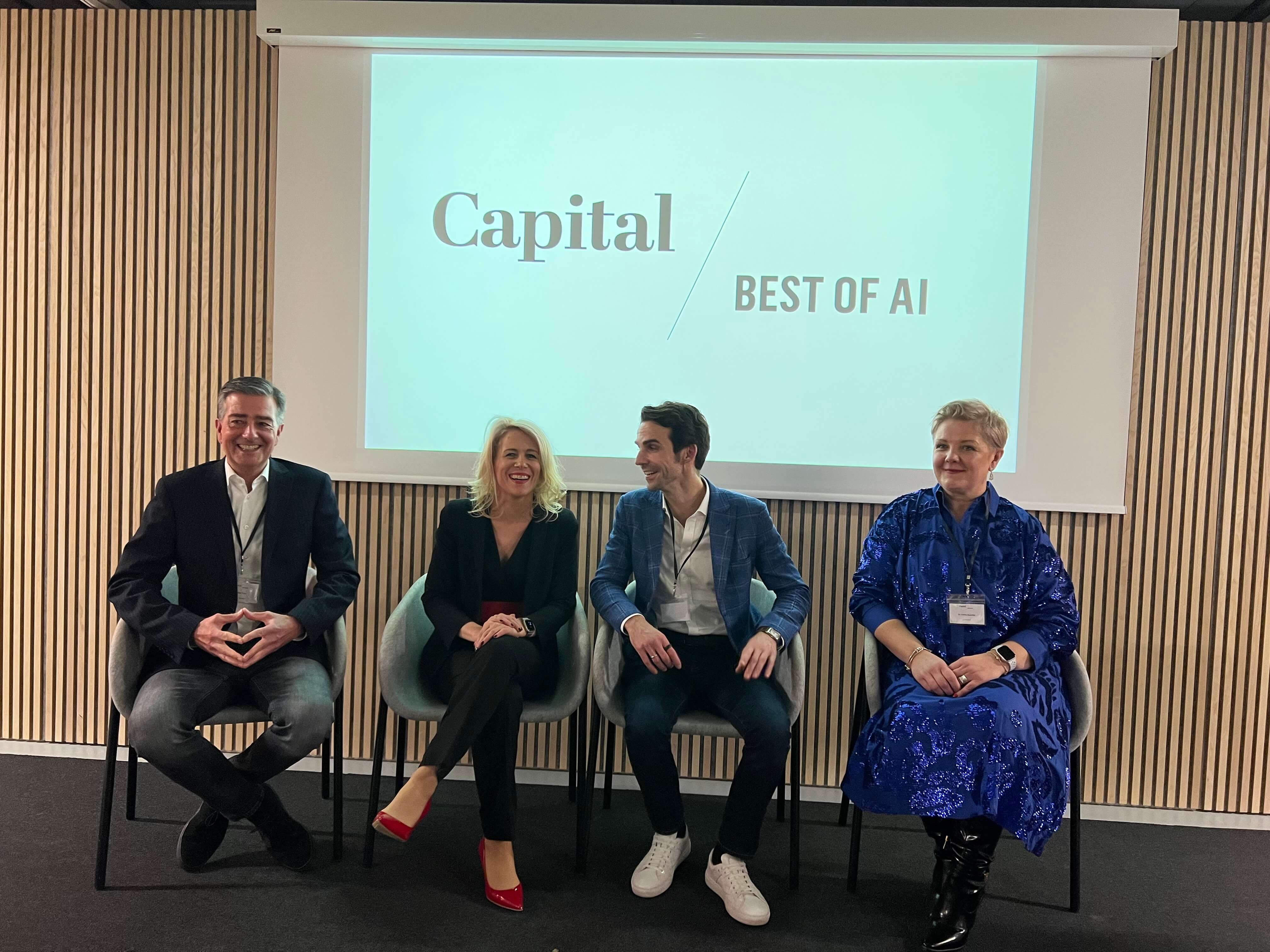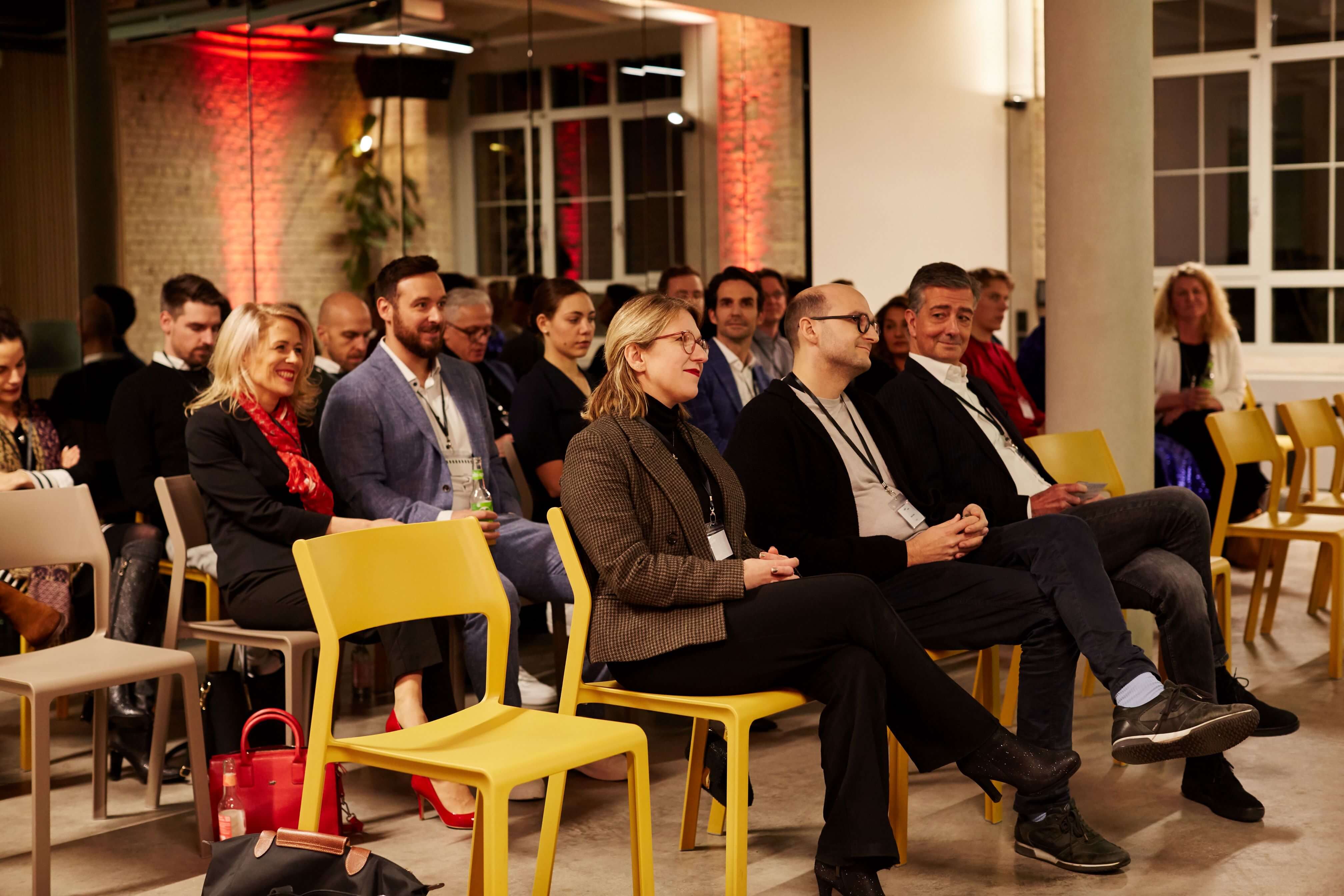Artificial intelligence is no longer a topic for the future – it is already changing companies, processes and management concepts today. Daniela Rittmeier, Head of Capgemini's Generative AI Accelerator, is one of the most important voices in the field of AI. In this interview, she talks to Markus Trost about her approach to leadership in times of technological disruption, why AI is no longer an innovation for her – and how companies can make the leap from idea to value creation.

Your career in artificial intelligence is impressive. What was the decisive moment that led you to pursue this path as a manager? And was there ever a moment when you deeply regretted this decision?
The decisive moment came at the BMW Group when I took over responsibility for the first AI strategy from the Autonomous Driving department. I am an inquisitive person and love complex challenges – I quickly realised that sustainable, successful AI integration requires more than just technology. It involves profound changes – from processes and organisations to new collaboration models.
Success in AI is not achieved in a sprint, nor in a marathon – rather in a seemingly endless triathlon.
This complexity captivated me. I felt: this is my playing field. I never really had any doubts – but you can't underestimate the challenges that come with it. Success in AI isn't achieved in a sprint, nor in a marathon – it's more like a seemingly endless triathlon. It takes strength, resilience, endurance and a lot of energy. Fortunately, I have all of those things. That's why I'm sure that I'm in the right place.
Leadership is always linked to transformation and further development. Could you describe your current employer from this perspective? And how did you succeed in making artificial intelligence a strategic priority and an economic success?
After my time at BMW, I deliberately chose a rather unexpected path – from industry to IT services and development. My goal was to apply my relevant experience where it could be scaled: across industries and along the entire value chain.
Capgemini offers the ideal environment for this. We are a European-based, globally active company with currently 340,000 employees. We are organised in a kind of ‘supermatrix’ – across industries (e.g. automotive, life sciences, public sector, finance, etc.) and along a wide range of competencies: from classic consulting and product development to testing, validation and engineering. This makes us unique in terms of hardware-software co-design and enables us to deliver end-to-end – from strategy and implementation to integration into physical products. A clear USP.
In addition to our agile organisation, our European origins are another factor in our success. In a geopolitically sensitive environment, it is an advantage to combine international work with a value-based, Western mindset. This creates trust and stability – both internally and externally.
Artificial intelligence is not just a buzzword for us, but part of our DNA: around 10% of Capgemini – approximately 35,000 colleagues – work on data and AI. This enables us to draw on a broad pool of expertise. Due to our cultural diversity, it is sometimes challenging to put teams together, but at the same time, this diversity ensures sustainable creative solutions and enormous acceleration for our clients. The focus is always on people – not technology.

You were recognised by Capital as one of the leading AI personalities in the DACH region. In your opinion, what makes leadership in the field of data and AI special – and which aspect are you most passionate about personally?
Leadership in the field of artificial intelligence differs fundamentally from traditional leadership models. In the hardware-driven industry, it often seemed possible in the past for individuals to bear sole responsibility. I like to call this the ‘Highlander principle’ – true to the motto: ‘There can be only one.’ This is precisely what does not work in the software-driven world. AI is a team sport. The responsibilities are too complex, too multi-layered.
Successful AI integration requires interdisciplinary teams – experts from IT, specialist departments, engineering, product development and other areas of expertise. Leadership here means no longer just steering, but continuously connecting and learning. Approachability, openness and a genuine interest in the different disciplines, perspectives and skills are key.
What drives me personally: I am convinced that you have to be a people person to use AI in a sustainable and effective way. Many people talk about technology – about models, code, algorithms. But in the end, it's not about replacing people, but about empowering them to become better, faster and more efficient. Technology can take over repetitive tasks so that we can use our valuable time for creativity.
We must put people at the centre – not technology.
Trust becomes the key currency here. Our studies show that in 2023, 73% of respondents still trusted generative AI – a year later, that figure had fallen to just 42%. For new systems such as Agentic AI, trust currently stands at just 27%. The decline in trust shows that we need to put people at the centre – not technology. Managers who understand and live by this principle are heading in the right direction for the long term.
As a leader in such a dynamic field as AI, how do you manage to inspire stakeholders in top management and your team? And what strategic vision have you used to unite them behind you?
People often tell me that I radiate a lot of energy – perhaps even too much for some. But it is precisely this dynamism that is essential for getting people on board in a complex and volatile environment. Energy is contagious – and it is necessary to generate movement and the necessary friction.
At the same time, we need a vision and mission, which we have developed together in my team. I currently head up the Generative AI Accelerator at Capgemini, and our vision is:
„We are accelerating Capgemini’s AI transformation –
trustworthy I by excellence I across business.“
This is where our mission comes from:
‘With data at our fingertips, our interdisciplinary teams
- Incubate [Generative] AI
- Inspire AI-driven business growth &
- Unleash your data's added value in order to secure the future you want.’
This is more than a guiding principle – it is our compass. With every decision, every prioritisation, we reflect: Does this align with our mission? Does this bring us one step closer to the future we want to shape?
And crucially, it is never about one person. It is about shaping this transformation together – in a people-centred, value-based way and with a holistic view of our future.
Think big. Start small. Show value.
How does your company manage to implement successful use cases and scale them up? Can you share a specific example?
When companies approach us, I often hear: ‘We urgently need to do something with AI – but where do we start?’ In such moments, I like to work with a clear principle that has proven very successful:
‘Think big. Start small. Show value.’
‘Think big’ stands for a holistic AI and data strategy that is derived from the corporate strategy. That sounds simple, but it is often one of the biggest hurdles: Who are we as a company? What makes us unique? Where do we want to go – and how do we ensure our competitiveness in the digital customer ecosystem?
‘Start small’ means starting with a few, carefully selected use cases – ideally ones that are not too complex and that can benefit multiple departments. Instead of looking for the one ‘killer use case,’ we focus on scalability from the outset. An example: an intelligent call centre. When we develop it for a region such as Europe, we immediately consider how it can also be rolled out to customers in North America or the Asia-Pacific region.
Finally, ‘show value’ means that we demonstrate the customer value right from the start. This means we bring together the right skills, build a functional MVP (minimum viable product) in the existing IT infrastructure and test the initial hypothesis. This creates real, measurable data value for the business and thus trust and acceptance for further scaling.
This is exactly how we develop sustainable success. Not with actionism, but with strategy, focus and a clear value orientation – and always with people at the centre.
You have been working successfully in the field of AI for some time now. How will this technology change leadership – and how will your own leadership style develop over the next three years?
Leadership will undergo fundamental change in the wake of the AI transformation – and it needs to. I make a conscious distinction between traditional managers, who administer the status quo, and leaders, who act with vision and foresight. Right now, in a time of disruptive developments, we need the latter. AI is changing not only technologies, but entire business models – in every industry, among our clients and at Capgemini as well.
Shaping this dynamic requires a new approach to leadership: data-driven, people-centred, networked. Trust becomes the key currency, because technological development alone is not enough – it must be embedded in socially meaningful and economically viable structures.
At the same time, we are witnessing a tremendous upheaval in the leadership landscape. Many companies in the ‘old economy’ are under pressure, and numerous leadership positions are rotating. For me, this is a logical consequence of the ‘war for tech talent.’ In economically challenging times, people reflexively retreat to the familiar. We need exactly the opposite. We need encouragers. We need a holistic approach. We need to ask the right questions.
Not: What will the next car look like? But: What does the future of sustainable mobility look like? Not: What can a new X-ray machine do? But: What does the future of intelligent healthcare services look like? Not: What will the next tank look like? But: What does the future of networked defence for our security and stability look like? These questions will determine our future. And they require leadership that embraces complexity, integrates perspectives and seeks sustainable solutions.
As for my own leadership style, I have learned in recent years that my strength lies in building bridges – as a translator between diverse disciplines, functions and perspectives. I want to continue working on this: setting up my teams in such a way that they take responsibility themselves, lead in an interdisciplinary manner and, in turn, empower others. It's a snowball effect – simply ‘leading by example’.
I want to initiate the necessary discussions, create visibility and open up spaces for participation. This is precisely my contribution to driving forward data- and AI-driven transformation in a people-centred way. This is the field in which I want to continue to invest my energy in the future.
You are also responsible for innovation. What innovations are you currently focusing on, apart from AI?
To be honest, I don't like the term “innovation” anymore. It no longer seems appropriate to me in the context of AI. A colleague from the UK recently summed it up perfectly: “AI playtime is over.” We are long past the experimental stage – now it's all about integrating and scaling data-driven technologies. For me, AI is no longer an innovation, but a living reality. We use it every day – in our everyday lives and, in the future, in all businesses.
I see myself less as an innovator and more as an AI incubator and accelerator.
Accordingly, I see myself less as an innovator and more as an AI incubator and accelerator. And that also means I focus on what really matters and is currently being neglected.
Another issue that concerns me is sustainability. Many new technologies are developed primarily from a purely economic perspective – but rarely with a view to resource consumption or the resulting carbon footprint. We need to rethink this.
As an engineer, I am driven by the question: How can we use the limited resources of our Mother Earth intelligently and responsibly – even, or especially, in the course of digitalisation? This is not just an innovation, it is our duty.
As a successful participant in the first cohort of the ‘Best of AI Awards,’ have you already seen positive effects from your participation?
For me personally, the most important effect was reflection. The selection process gave me the opportunity to pause and ask myself: Who am I, really? Who is Daniela Rittmeier as a person, and who is she as a leader? – And am I on the right track? This not only gave me clarity about my strengths, but also about where I want to focus my energy in the future.
Interestingly, the question ‘Why only second place?’ came up more and more often. I found the resulting discussions amusing at times. I was simply grateful to have been nominated at all. And when I came second again shortly afterwards at the Microsoft Power Woman Award, the debates continued immediately. But seriously: for me, it's not the place that counts, but what I can make of it.
An important effect of an award is visibility. If we want to make a difference, we have to be visible in order to articulate our views. Only then can we inspire others and encourage participation. For me, this stage is not just about being seen myself – it's also about giving my amazing team and my network a platform. One of my most important employees accompanied me to the award ceremony, which opened up a new network and a new stage for him.
I think I can be proud of the award – but even more so that it allows me to give AI and the people behind it more of a stage.
We would like to thank Ms Rittmeier for the inspiring conversation.
Portrait of Daniela Rittmeier: Tom Kirkpatrick
Photos from the award ceremony: Capital / Alena Schmick



